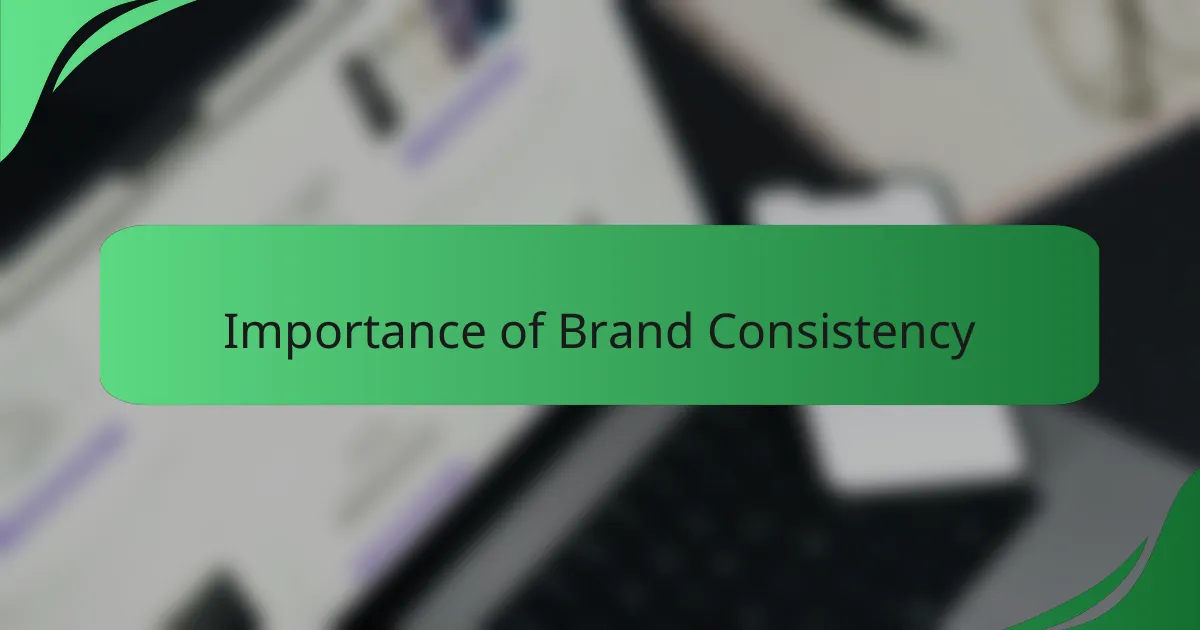Key takeaways
- Interface interaction design balances usability and visual design to enhance user experiences.
- Brand consistency strengthens recognition, trust, and emotional connection with the audience.
- Canva’s user-friendly tools facilitate the creation of cohesive visuals and brand identities.
- Maintaining a clear brand palette and typography fosters familiarity and professionalism in designs.

Understanding Interface Interaction Design
Understanding Interface Interaction Design is crucial for creating effective and engaging user experiences. I’ve often found that good design isn’t just about aesthetics; it’s about how users interact with an interface. For instance, one of my recent projects involved redesigning a website for better navigability, and the difference was astounding—it led to increased user satisfaction and engagement.
During my journey, I realized that interface design is a balance between functionality and visual appeal. Every decision counts, from button placements to color schemes, and I remember the joy of seeing users effortlessly navigate my design.
Here’s a comparison of two critical aspects of interface interaction design:
| Aspect | Description |
|---|---|
| Usability | How easy and intuitive the interface is for users. |
| Visual Design | The aesthetics and style that enhance user experience. |

Importance of Brand Consistency
When I first ventured into the world of branding, I quickly grasped that consistency isn’t merely a buzzword—it’s the backbone of a strong brand identity. I remember working on a project where the brand’s visual elements were all over the place; it was jarring for users and ultimately confusing. This taught me that cohesive branding can enhance recognition and trust, creating a seamless experience for the audience.
In my experience, inconsistent branding can evoke uncertainty. Have you ever seen a logo that looked completely different on social media than on a website? It can disrupt the connection a user feels with a brand. I learned that maintaining consistent elements, like color palettes and typography, not only fosters familiarity but also strengthens user loyalty—a crucial aspect in today’s highly competitive digital landscape.
There’s a powerful emotional component to brand consistency that I’ve witnessed firsthand. It’s almost like meeting a friend you haven’t seen in years; that recognition and warmth can be incredibly reassuring. When users encounter a consistent brand presence, it cultivates a sense of belonging and reliability—two sentiments I aim to evoke in all my projects.

Introduction to Canva for Design
When I first discovered Canva, I was amazed at how user-friendly it was. The intuitive interface meant I could jump right in without feeling overwhelmed, which is crucial for someone like me who prefers a hands-on approach to design. I remember creating my first social media post, feeling a rush of satisfaction as I transformed a simple idea into a visually appealing graphic in just a few minutes.
Canva isn’t just about making pretty images. It offers a suite of tools and templates that help maintain brand consistency across all your designs. This has been a game-changer for me, especially when working on projects that require a cohesive visual identity. Every time I open Canva, I feel empowered to create something that truly reflects my brand’s essence.
- User-friendly interface that caters to all skill levels
- Extensive library of templates for various design needs
- Collaboration features for working with teams seamlessly
- Customizable elements to ensure brand alignment
- Ability to upload and integrate personal fonts and colors for consistency

Crafting Visual Identity with Canva
Creating a visual identity is like painting a portrait of your brand. Using Canva has made this process enjoyable and accessible for me. I’ve found that the flexibility of templates allows for creative expression while ensuring that my brand’s core elements shine through consistently.
One of the key parts of establishing brand consistency is selecting a cohesive color palette and typography. I’ve spent hours experimenting with different combinations in Canva. The process was surprisingly rewarding; it felt like piecing together a puzzle that perfectly reflects my brand’s personality.
When I began, I didn’t realize how crucial it was to maintain visual uniformity. Through trial and error, I learned the importance of sticking to a specific style guide developed within Canva. This not only fosters recognition but also builds trust with my audience.
| Aspect | Using Canva | Traditional Design Methods |
|---|---|---|
| Flexibility | High, with templates and easy edits | Moderate, often requires outside help |
| Cost | Affordable, often free features | Can be expensive, depending on tools and services |
| Time Efficiency | Quick, drag-and-drop features | Slow, requires multiple software tools |
| Learning Curve | Low, user-friendly interface | Varies, can be steep with complex software |

Tips for Consistent Branding
When it comes to consistent branding, clarity and simplicity are your best allies. I found that establishing a clear color palette and typography was essential. This didn’t just give my designs a cohesive look; it also made my messaging stronger and more recognizable.
Creating templates in Canva was a game changer for maintaining uniformity. I paired my brand colors with selected fonts in predetermined layouts. Each time I completed a project, the familiarity of these designs helped evoke a sense of trust and professionalism.
I also learned to incorporate brand elements like logos and taglines consistently across all platforms. It surprised me how these small details fostered a greater connection with my audience. The impact was immediate—people started recognizing my work just from these visual cues.
| Tip | Description |
|---|---|
| Color Palette | Stick to a defined set of colors that reflect your brand identity. |
| Typography | Select 1-2 fonts to use across all materials for a cohesive look. |
| Templates | Create customizable templates in Canva for consistent layouts. |
| Brand Elements | Use logos and taglines consistently to enhance recognition. |

Case Study of My Branding Journey
In my branding journey, I found that consistency is key. When I first started, it felt overwhelming to maintain a unified look across all my designs. I remember feeling frustrated after seeing my social media posts and marketing materials clash in style, which led me to discover Canva. It was a game-changer for me, allowing me to create cohesive visuals that represent my brand accurately.
Utilizing Canva, I was able to establish a recognizable brand identity that resonated with my audience. I created a brand kit that included specific colors, fonts, and logos, which streamlined my design process. Here’s what I focused on during this journey:
- Developed a brand kit in Canva with customized colors that reflect my brand’s personality.
- Selected two primary fonts for consistency across all materials, including headers and body text.
- Created a library of templates for various platforms to maintain visual identity in posts and ads.
- Regularly updated my designs based on feedback and analytics to keep my brand engaging without losing its core style.

Conclusion and Key Takeaways
Brand consistency has profoundly impacted my approach to design, and using Canva has made this journey not only feasible but also enjoyable. I can’t help but think about how much time I wasted in the past trying to juggle inconsistent design elements. Now, with Canva’s templates and brand kits, I effortlessly create visuals that not only look professional but also reflect my brand’s true essence. This has reinforced my belief that when you maintain a cohesive visual identity, you build a deeper connection with your audience.
Reflecting on my journey, I realize that the little details truly matter. Whether it’s the specific shades of color or the consistent use of typography, each element contributes to an overarching narrative that users come to trust. I remember the first time I received feedback from a viewer who recognized my work without seeing my name—an exhilarating moment! It drove home the point that consistency doesn’t just enhance brand visibility; it cultivates a sense of belonging in a world filled with constant change.
Ultimately, the takeaway is simple: investing time in maintaining brand consistency through tools like Canva pays off immensely. Have you considered how a cohesive visual identity shapes your relationship with your audience? Through my experience, I’ve found that consistency goes beyond mere aesthetics; it’s about creating a reliable experience that resonates with users on an emotional level. This is a journey worth embarking on, and I can’t recommend it enough.




